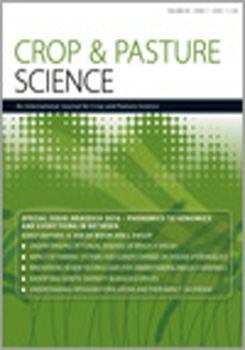Broadening of genetic diversity in spring oilseed Brassica napus L. (AACC, 2n = 38) canola is important for continued improvement of this crop. For this, the vast allelic diversity of the A genome of Brassica rapa L. (AA, 2n = 20) can be utilised. We investigated the prospect of developing canola-quality euploid B. napus lines carrying the alleles of B. rapa from F2 and BC1 (F1 × B. napus) populations of three B. napus × B. rapa interspecific crosses involving one B. napus and three genetically distinct B. rapa parents. In meiosis, the F1 AAC hybrid was expected to show normal segregation for the A genome chromosomes, whereas a range of C chromosomes from zero to nine was expected to be included in the gametes due to random segregation of this haploid set of chromosomes. Subsequent self-pollination, theoretically, should have eliminated the unpaired C chromosomes and resulted in a majority of B. rapa type. However, no B. rapa-type progeny were detected, and all progeny in the F8 conformed to be B. napus type. Correlation between parent and offspring generation, grown in greenhouse or field, was weak to moderate for seed glucosinolate content; however, the simpler genetic control of this trait, involving only the A genome loci, allowed the development of low-glucosinolate lines from this interspecific cross. Of the theoretical number of simple sequence repeat (SSR) marker alleles of B. rapa expected to be present in F4 and F8 populations, about 45% were detected in these populations, suggesting that the loss of these marker alleles occurred prior to the F4 generation. Loss of several SSR loci was also detected in these populations, which probably resulted from homoeologous pairing and rearrangements of the chromosomes of the A and C genomes. Genetic diversity analysis performed on the F8 progeny of two crosses showed that the two populations clustered into distinct groups, which demonstrates that they inherited SSR B. rapa alleles unique to each B. rapa parent. We conclude that B. rapa alleles from diverse sources can be readily incorporated into B. napus progeny by this interspecific crossing method.
How to translate text using browser tools
13 November 2017
Introgression of allelic diversity from genetically distinct variants of Brassica rapa into Brassica napus canola and inheritance of the B. rapa alleles
Rohit Attri,
Habibur Rahman
ACCESS THE FULL ARTICLE

Crop and Pasture Science
Vol. 69 • No. 1
January 2018
Vol. 69 • No. 1
January 2018
chromosome stabilisation
fertility
flow cytometry
marker heritance
parent–offspring




